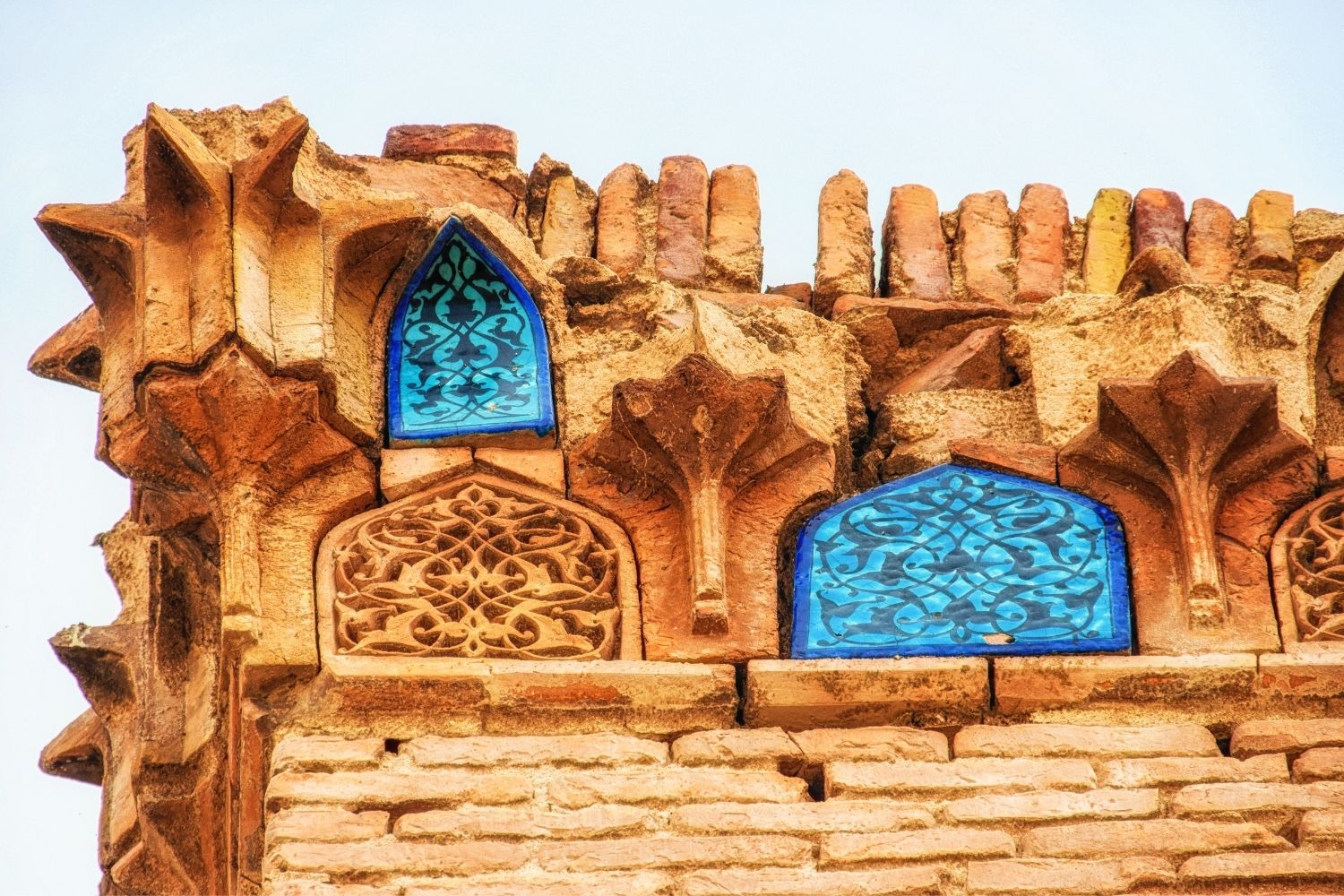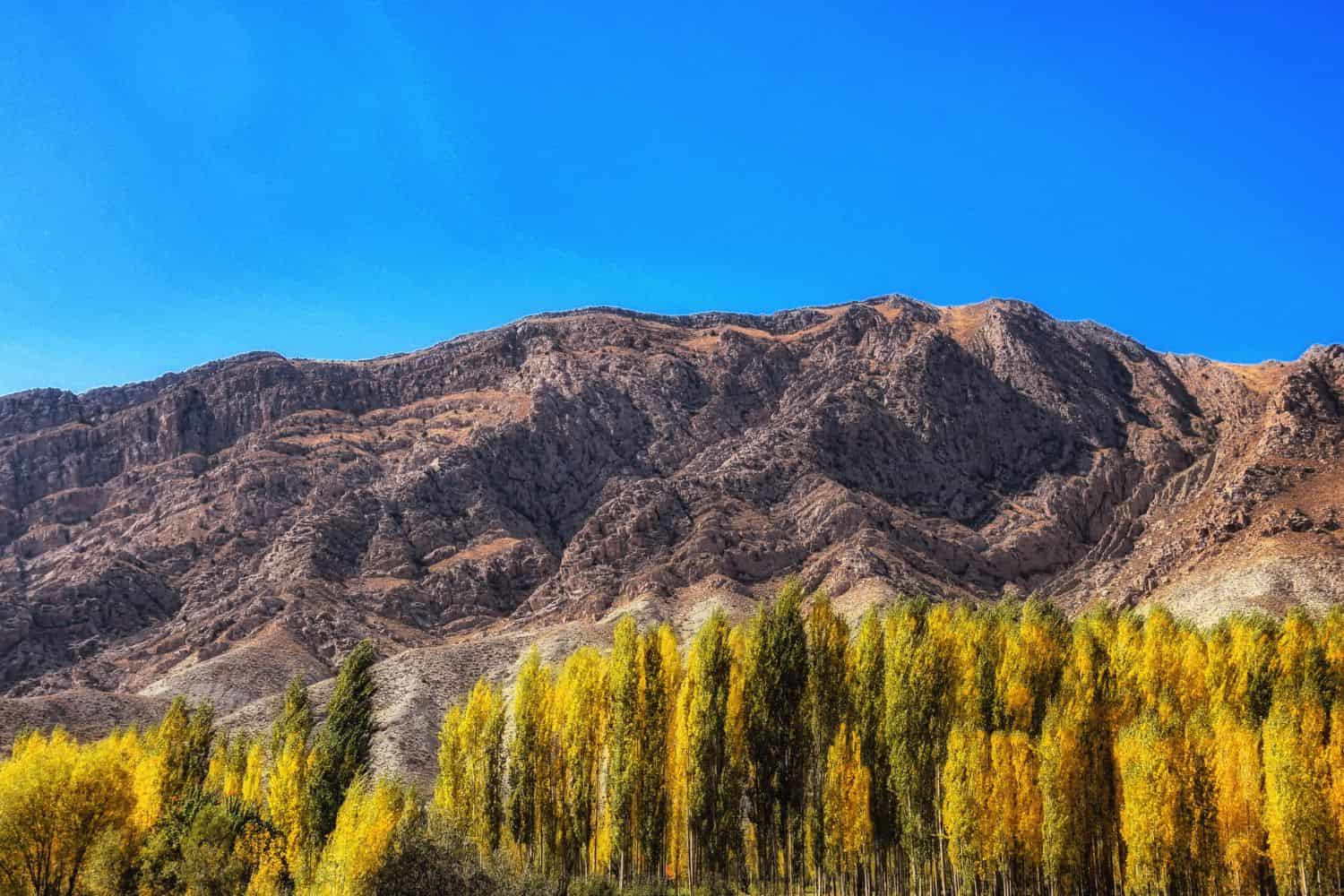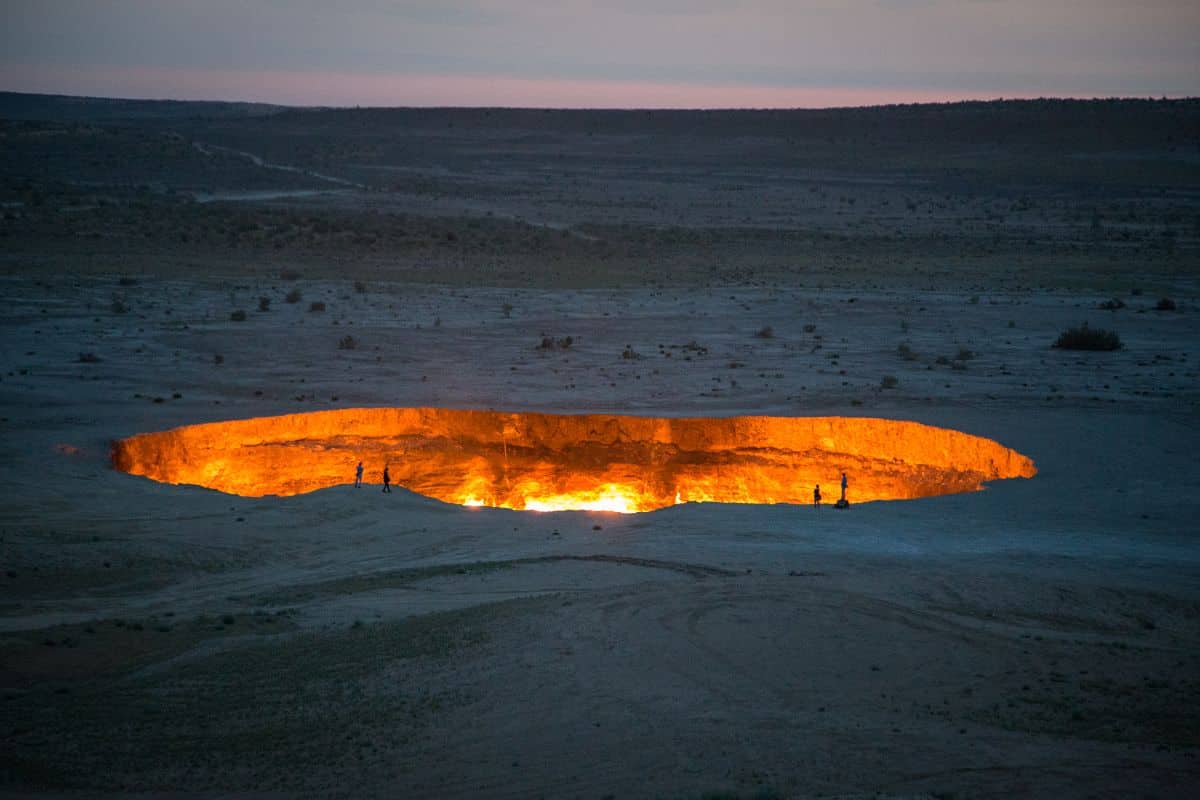Table of Contents
Delve into Turkmenistan culture as we offer you a comprehensive understanding of the customs of Turkmenistan, along with its rich and colorful heritage, including traditions, values, and unique customs and practices.
Turkmen place great importance on hospitality, warmly welcoming guests. Family forms the cornerstone of Turkmen society, with strong bonds and a profound sense of community. It’s essential to acknowledge that Turkmenistan culture continues to evolve, shaped by historical events, regional dynamics, and global interactions.
Gaining insight into the culture of Turkmenistan can provide valuable understanding of this intricate and diverse society within the country.
Turkmenistan Culture
To start learning about Turkmenistan culture and customs, consider the following key points:
- Ethnic Diversity: Turkmenistan boasts a diverse array of ethnic groups, each with its unique customs and traditions. Turkmen, Russians, Uzbeks, and Kazakhs are among the major ethnic communities.
- Languages: Turkmen is the official language, but Russian is also widely spoken, particularly in urban areas. Various regional languages and dialects are spoken throughout the country.
- Islamic Influence: Turkmenistan is predominantly a Muslim country, and Islamic traditions influence daily life, values, and societal norms. This includes daily prayers, fasting during Ramadan, and adherence to Islamic dietary laws. The majority of Turkmen practice Sunni Islam.
- Greeting Etiquette: Greetings hold significance in Turkmenistan culture. Handshakes are common among men, while men and women generally greet each other verbally with polite expressions.
- Traditional Attire: Traditional Turkmen clothing, such as robes and headgear, is still worn by some, but modern attire is prevalent in urban areas. Traditional dress varies by region and ethnicity, reflecting Turkmen identity.
- Cuisine: Turkmen cuisine features dishes like manti (dumplings), plov (rice pilaf), and shashlik (kebabs), influenced by Central Asian and Middle Eastern flavors.
- Hospitality: Turkmen people are known for their generous hospitality. When visitors arrive, they are typically offered tea and refreshments, and it is polite to accept such offers.
- Respect for Elders: Respecting elders is a deeply ingrained custom in Turkmen society. Younger individuals demonstrate reverence for their seniors through words and actions.
- Arts and Crafts: Turkmenistan has a rich tradition of arts and crafts, including carpet weaving, jewelry making, and traditional Turkmen embroidery.
- Music and Dance: Traditional Turkmen music incorporates instruments like dutar and dap, while folk dances are an integral part of cultural celebrations.
- Celebration of Festivals: Turkmenistan celebrates various cultural and religious festivals, including Nowruz (New Year), Kurban Bayram (Eid al-Adha), and Gurban Bayram (Eid al-Fitr), which involve special prayers, feasts, and gatherings with loved ones.
- Family and Community: Family holds a central place in Turkmen society, and strong community bonds are crucial for support and social cohesion.
- Gender Roles: Traditional gender roles are observed in Turkmenistan culture, with distinct social spheres for men and women. However, changes may be occurring, particularly in urban settings.
- Marriage Customs: Turkmenistan may have various marriage customs, and families often play a significant role in matchmaking, emphasizing the commitment between families as well as individuals.
- Historical Influences: Turkmenistan’s history, including its Soviet past, has left its mark on the culture, contributing to a unique blend of traditional and modern elements.
These customs and traditions are fundamental aspects of Turkmenistan culture, shaping daily life and reflecting the country’s rich cultural heritage and strong sense of tradition and community.
Turkmenistan Traditional Attire
Turkmenistan Traditional Attire reflects the country’s cultural diversity, regional distinctions, and historical heritage. Turkmen clothing is not only functional but also carries profound cultural and social significance.
1. Regional Diversity: Turkmenistan’s traditional clothing varies from one region to another, influenced by local climate, lifestyle, and ethnic traditions. In colder and mountainous areas, people tend to wear heavier and more layered garments, whereas in warmer regions, lighter clothing is favored.
2. Traditional Turkmen Robes: The traditional attire for many Turkmen men consists of long robes known as “chapan” or “kurte.” These robes are often adorned with intricate embroidery and are worn with matching pants and a distinctive skullcap. Women may wear dresses or robes with similar embroidery and patterns.
3. Embellishments and Symbolism: Traditional Turkmen clothing features richly embroidered patterns, often with geometric shapes and vibrant colors. These embellishments carry cultural and regional significance, and the patterns may indicate a person’s tribal or social identity.
4. Nomadic and Tribal Attire: Nomadic tribes, such as the Yomut and Teke, have their own distinctive clothing styles, characterized by bright colors, intricate jewelry, and unique headdresses. These attire choices are not only functional but also symbolic of tribal affiliation.
5. Modesty and Cultural Significance: Turkmen traditional attire places importance on modesty, with loose-fitting garments that cover the body. The choice of colors, fabrics, and embroidery often reflects cultural and regional customs, and clothing may also signify a person’s social or marital status.
6. Special Occasions: For special occasions like weddings, festivals, and religious celebrations, Turkmen people don elaborately embroidered and decorated clothing. These outfits are typically adorned with intricate beadwork and jewelry, allowing individuals to showcase their finest traditional attire.
7. Adaptation to Modernity: While traditional clothing remains significant, Turkmenistan’s urbanization and exposure to modern influences have led to the integration of Western attire into daily life, especially in urban centers. Many Turkmen people now wear a blend of traditional and contemporary clothing, reflecting changing lifestyles and global fashion trends.
Turkmenistan traditional attire is not just clothing; it is a vibrant representation of the country’s cultural richness, history, and identity. It serves as a visual testament to the diverse traditions that have shaped Turkmen society over the centuries.
Turkmenistan Marriage Traditions
Turkmenistan Marriage Traditions are deeply rooted in the country’s cultural and historical heritage, influenced by the Turkmen ethnic group’s customs and Islamic traditions. These traditions play a significant role in Turkmen society, reflecting both historical practices and contemporary influences.
1. Arranged Marriages: Arranged marriages are common in Turkmenistan, with families typically taking an active role in matchmaking. Compatibility between families and adherence to cultural and religious values are essential considerations when selecting a spouse.
2. Matchmakers: Matchmakers, known as “goşgular,” play a crucial role in finding suitable matches for individuals. They consider factors such as family background, social status, and compatibility when suggesting potential partners.
3. Engagement: Once a suitable match is found, the engagement process begins with a formal agreement between the families. This agreement, known as “söz kesimi,” marks the commitment of the couple to marry.
4. Wedding Celebrations: Turkmen weddings are joyous and vibrant occasions, typically lasting for several days. They include traditional rituals, feasting, music, and dancing. The main wedding ceremony involves the signing of the marriage contract and is often held in a mosque or at home.
5. Bride Price (Kalym): In Turkmen tradition, the groom provides a “kalym” or dowry to the bride’s family as a symbol of commitment and financial support. The size and form of the kalym can vary depending on the families involved.
6. Bridal Attire: Brides in Turkmenistan wear elegant and intricately embroidered dresses, often accompanied by traditional jewelry and headdresses. The attire may vary by region and ethnic group within Turkmenistan.
7. Post-Wedding Customs: After the wedding, various traditions may continue, such as the “toy atly” or wedding feast, where the newlyweds are introduced to the community as a married couple.
8. Religious Significance: Marriage in Turkmenistan is deeply intertwined with Islamic customs and traditions. The marriage contract, known as “nikah,” is performed according to Islamic principles and may include recitations from the Quran.
9. Family and Community Involvement: Turkmen weddings are not only a celebration of the couple but also a community event. Extended families and the broader community participate in the festivities, offering support and blessings to the newlyweds.
10. Contemporary Changes: While arranged marriages are still prevalent, there is a growing trend in urban areas and among the younger generation toward love marriages, where individuals choose their partners based on personal preferences. However, even in love marriages, many couples may still incorporate traditional customs and ceremonies into their celebrations.
Turkmenistan marriage traditions reflect the importance of family, community, and cultural identity in Turkmen society. These traditions continue to evolve but remain a significant aspect of Turkmen life, preserving the country’s cultural heritage and social bonds.
Turkmenistan Food Culture
Turkmenistan food culture is a reflection of its unique geography, history, and the influence of various neighboring cuisines. It blends flavors from Central Asia, the Middle East, and Russia, resulting in a diverse and flavorful culinary tradition.
- Regional Variation: Food from Turkmenistan diverse geography, which includes deserts, mountains, and plains, has led to a wide range of regional cuisines. Each area integrates local ingredients and traditional cooking techniques, contributing to a rich tapestry of flavors unique to each locality.
- Staple Foods: Turkmen cuisine relies on staple foods like rice, bread (often in the form of “lepyoshka” or Turkmen bread), and grains such as wheat and millet. Rice dishes and pilafs are commonly enjoyed.
- Meat-Centric: Meat is a central element of Turkmen cuisine, with lamb, beef, and chicken being the most commonly consumed meats. Kebabs, “shashlyk,” and “plov” (rice pilaf with meat) are popular meat-based dishes.
- Flavorful Spices: Turkmen dishes are seasoned with a variety of spices, including cumin, coriander, black pepper, and dill, which enhance the flavors of their cuisine.
- Dumplings and Pastries: Dumplings called “manti” and pastries like “gözleme” are cherished dishes in Turkmen cuisine. These may be filled with meat, vegetables, or cheese.
- Dairy Products: Dairy products like yogurt and various types of cheese are commonly used in Turkmen cuisine. Yogurt-based sauces and drinks are popular additions to many meals.
- Fish and Seafood: In coastal regions, fish and seafood play a significant role in the cuisine. Grilled and fried fish, along with various seafood stews, are enjoyed by locals.
- Sweets and Desserts: Turkmen sweets often include ingredients like honey, dried fruits, and nuts. Pastries like “çöräk” and “pakhlava” are common, and sweet tea is a popular beverage.
- Tea Culture: Similar to Afghanistan, tea culture is strong in Turkmenistan. Black tea, usually served sweet, is a common choice, and tea gatherings are an important social activity.
- Hospitality: Turkmen hospitality is renowned, and guests are often welcomed with food and refreshments. It is considered polite to accept offers of food and drink when visiting someone’s home.
- Traditional Breads: Bread is an essential part of Turkmen cuisine, and various types of bread, such as “gözleme” and “çöräk,” are baked daily and served with meals.
- Cultural Festivals: Traditional Turkmen dishes are often prepared and enjoyed during cultural festivals and celebrations, adding a sense of cultural identity and unity to the cuisine.
Book our services
These guiding services ensure that your journey is not only enjoyable but also informative and hassle-free. Turkmenistan’s cultural delights, historical marvels, and natural wonders await your exploration with RJ Travel LLC. Our Turkmenistan Private Tours are designed to immerse you in the rich cultural heritage, historical significance, and breathtaking landscapes of this extraordinary nation.
Contact Us and our team will make sure to help you plan your trip to Turkmenistan when it’s safe and ready for travel. Whether you’re interested in joining a pre-arranged Turkmenistan small group tour or creating a custom itinerary, we are here to make your Turkmenistani adventure an unforgettable reality.
More About Turkmenistan
Book Your Trip to Turkmenistan Today!
Embark on an unforgettable journey and explore the allure of Turkmenistan through our exclusive tours.








